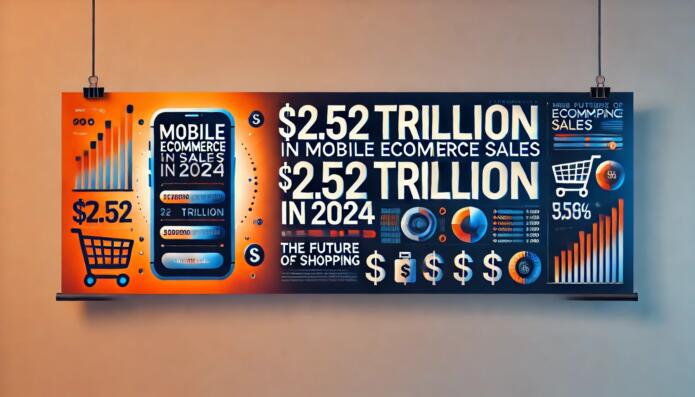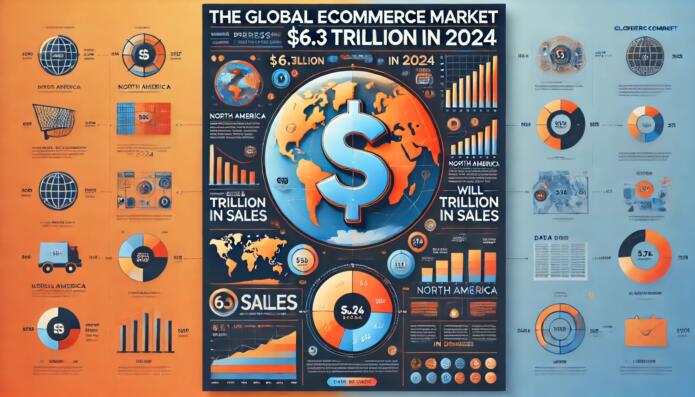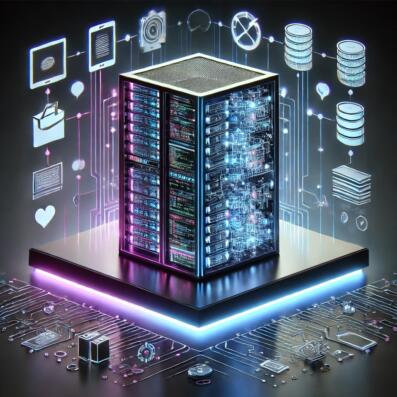What Is a Headless E-Commerce Platform?
In the world of e-commerce, the need for flexibility, scalability, and personalization has never been greater. To meet these demands, businesses are increasingly turning to a relatively new concept in the industry: the headless e-commerce platform.
But what exactly does “headless” mean in this context, and how does it differ from traditional e-commerce platforms? In this article, we’ll delve into the concept of headless e-commerce, exploring its architecture, how it works, and the advantages it offers.
Understanding the Traditional E-Commerce Platform
Before diving into the headless approach, it’s important to understand how traditional e-commerce platforms are structured. In a conventional e-commerce setup, the front end (the part of the website that customers interact with) and the back end (the server, database, and application that manage content and transactions) are tightly integrated.
This means that the design, content, and functionality are all managed within a single system, often referred to as a monolithic architecture.
While this integrated approach has its benefits, such as simplicity and ease of use, it also comes with significant limitations. For example, making changes to the front-end often requires corresponding changes to the back end, slowing development and limiting flexibility.
Additionally, as new technologies and devices emerge, traditional platforms may struggle to keep up, leading to outdated user experiences.
What Is a Headless E-Commerce Platform?
A headless e-commerce platform takes a different approach by decoupling the front end from the back end. In this setup, the “head” (i.e., the front-end or the user interface) is separated from the “body” (i.e., the back-end system that handles business logic, data management, and content storage).
This decoupling allows the front-end and back-end to operate independently, connected through Application Programming Interfaces (APIs).
Key Components of a Headless E-Commerce Platform:
- Front-End: The front-end can be any user interface, such as a website, mobile app, or even a smart device interface. Developers have the freedom to build the front end using any technology stack they prefer, without being constrained by the limitations of the back-end platform.
- Back-End: The back-end is responsible for managing the core e-commerce functionalities, such as inventory management, order processing, customer data, and content management. It operates independently of the front end and communicates with it via APIs.
- APIs: APIs serve as the bridge between the front-end and back-end, allowing them to exchange data and functionality. This API-driven architecture is what enables the flexibility and versatility of headless e-commerce platforms.
How Does a Headless E-Commerce Platform Work?
In a headless e-commerce platform, the front-end interface is developed separately from the back-end system. When a user interacts with the front end (for example, by browsing products on a website or making a purchase through a mobile app), the front end communicates with the back end via APIs to retrieve or send the necessary data.
Here’s a simplified breakdown of the process:
- User Interaction: A customer interacts with the front end, such as by searching for a product or adding an item to their cart.
- API Request: The front end sends an API request to the back end to retrieve data (like product details) or to execute a function (such as processing an order).
- Back-End Response: The back-end processes the request, accesses the necessary data or functionality, and sends the information back to the front-end via the API.
- Front-End Display: The front-end receives the data and updates the user interface accordingly, providing the customer with the desired information or action.
Advantages of a Headless E-Commerce Platform
1. Flexibility and Customization
With the front-end and back-end decoupled, businesses have the freedom to design and develop their user interface however they see fit. This flexibility allows for highly customized and unique customer experiences that align closely with the brand’s identity.
2. Omnichannel Integration
A headless platform enables businesses to easily deliver content and functionality across multiple channels—such as websites, mobile apps, voice assistants, and more—using the same back-end system. This omnichannel capability ensures a consistent experience for customers, no matter how they interact with the brand.
3. Faster Development and Time to Market
Because the front-end and back-end can be developed independently, businesses can implement changes and launch new features more quickly. This is particularly beneficial in fast-moving markets where agility is key to staying competitive.
4. Scalability
Headless platforms are inherently more scalable than traditional monolithic systems. Businesses can scale the front-end and back-end independently, making it easier to handle increased traffic, add new features, or expand to new markets without overhauling the entire system.
5. Future-Proofing
As technology evolves, a headless approach allows businesses to adapt more easily. Whether it’s integrating with new devices, adopting new front-end frameworks, or leveraging emerging technologies, a headless platform provides the flexibility needed to stay ahead of the curve.

1. Flexibility and Customization
a. Decoupled Architecture:
- Independent Front-End Development: Headless e-commerce platforms allow developers to work on the front end independently of the back end. This decoupled architecture means that changes to the user interface (UI) can be made without affecting the back-end systems, enabling more rapid and agile development cycles.
- Technology Agnostic: Businesses can choose the best tools and technologies for their front-end development, whether it’s React, Angular, Vue.js, or any other framework. This flexibility ensures that the front end can be tailored precisely to the business’s needs and the preferences of its customers.
b. Personalized User Experiences:
- Dynamic Content Delivery: With a headless platform, businesses can deliver dynamic and personalized content to users based on their behavior, preferences, and past interactions. This level of personalization can significantly enhance the shopping experience, driving higher engagement and conversion rates.
- Omnichannel Consistency: A headless approach allows businesses to create a consistent brand experience across multiple touchpoints, including web, mobile, social media, and even Internet of Things (IoT) devices. This omnichannel consistency is crucial for building brand loyalty and ensuring a seamless customer journey.
2. Improved Performance and Scalability
a. Enhanced Site Speed:
- Optimized Front-End: Since the front-end and back-end are separate, developers can optimize the front-end for performance without being constrained by the limitations of a monolithic system. Faster loading times and a smoother user experience can reduce bounce rates and improve search engine rankings.
- Content Delivery Networks (CDNs): Headless platforms can easily integrate with CDNs to deliver content more quickly to users around the world. This is particularly important for global e-commerce businesses looking to provide a fast and responsive experience to international customers.
b. Scalability:
- Microservices Architecture: Many headless e-commerce platforms are built on microservices architecture, allowing businesses to scale individual components independently. This modularity ensures that as the business grows, it can handle increased traffic and transactions without compromising performance.
- Elastic Scalability: Cloud-based headless platforms offer elastic scalability, meaning they can automatically adjust resources based on demand. This capability ensures that the platform can handle peak traffic during sales events or holiday seasons without downtime or slowdowns.
3. Faster Time-to-Market
a. Agile Development:
- Parallel Development: With a headless approach, front-end and back-end teams can work in parallel, reducing development timelines. This agility enables businesses to launch new features, updates, and improvements more quickly than with traditional e-commerce platforms.
- Iterative Improvements: Headless platforms support iterative development, allowing businesses to continuously test, optimize, and refine their user experiences. This approach fosters a culture of innovation and responsiveness to market changes.
b. Seamless Integrations:
- API-First Design: Headless platforms are typically API-driven, enabling easy integration with third-party services and tools. Whether it’s a new payment gateway, marketing automation tool, or customer relationship management (CRM) system, businesses can quickly and seamlessly connect these services to their e-commerce platform.
- Future-Proofing: As new technologies and trends emerge, businesses using a headless platform can more easily integrate and adapt to these changes. This future-proofing ensures that the platform remains relevant and competitive in a rapidly evolving digital landscape.

4. Enhanced Customer Experience
a. Personalized Shopping Experiences:
- Data-Driven Insights: Headless platforms allow businesses to leverage customer data to create highly personalized shopping experiences. By analyzing user behavior, preferences, and purchase history, businesses can tailor product recommendations, promotions, and content to individual customers.
- Interactive and Engaging UIs: With the freedom to use any front-end technology, businesses can create interactive and visually appealing user interfaces that engage customers and encourage them to explore and purchase products.
b. Consistent Omnichannel Experience:
- Unified Commerce: Headless platforms enable a unified commerce approach, providing a seamless shopping experience across all channels. Customers can start a transaction on one device and complete it on another, ensuring convenience and satisfaction.
- Brand Consistency: Maintaining a consistent brand identity and messaging across all touchpoints is easier with a headless platform. This consistency builds trust and loyalty among customers, enhancing their overall experience with the brand.
5. Cost Efficiency and ROI
a. Reduced Development Costs:
- Reusable Components: Developers can create reusable components and templates that can be deployed across multiple channels. This reusability reduces development time and costs while ensuring consistency.
- Simplified Maintenance: With a decoupled architecture, maintaining and updating the platform is more straightforward. Businesses can address front-end issues without disrupting back-end operations and vice versa, reducing downtime and maintenance costs.
b. Increased Revenue Opportunities:
- Higher Conversion Rates: By delivering personalized and engaging shopping experiences, businesses can increase conversion rates and average order values. A faster and more responsive platform also contributes to higher customer satisfaction and repeat purchases.
- Global Reach: Headless platforms support internationalization and localization, enabling businesses to reach global markets more effectively. By offering localized content and payment options, businesses can attract and retain customers from different regions.
6. Security and Compliance
a. Enhanced Security:
- API Security: Headless platforms prioritize API security, implementing robust authentication and authorization mechanisms to protect data and transactions. This focus on security reduces the risk of breaches and ensures the safety of customer information.
- Isolated Front-End and Back-End: The separation of front-end and back-end components adds an extra layer of security. Even if the front end is compromised, the back-end systems remain protected.
b. Compliance Management:
- Regulatory Compliance: Headless platforms can be configured to comply with various regulatory requirements, such as GDPR, CCPA, and PCI DSS. Businesses can ensure that their platform adheres to data protection and privacy standards.
- Customizable Compliance: The flexibility of headless platforms allows businesses to implement specific compliance measures tailored to their industry and geographic location. This customization ensures that the platform meets all necessary legal and regulatory requirements.
7. Future-Proofing and Innovation
a. Adaptability:
- Emerging Technologies: Headless platforms are well-suited to integrate with emerging technologies such as AI, AR, VR, and IoT. This adaptability allows businesses to experiment with and adopt innovations that can enhance the customer experience and drive growth.
- Continuous Improvement: With the ability to iterate and improve continuously, businesses using headless platforms can stay ahead of the competition and respond quickly to changing market trends and consumer demands.
b. Competitive Advantage:
- Agility: The agility provided by a headless platform gives businesses a competitive edge. They can quickly launch new features, experiment with different user interfaces, and optimize the shopping experience based on real-time feedback.
- Customer-Centric Approach: By prioritizing the customer experience and delivering personalized, seamless interactions, businesses can differentiate themselves from competitors and build a loyal customer base.
Conclusion
The adoption of headless e-commerce platforms is transforming the way businesses approach online retail.
The benefits of using a headless platform are manifold, including greater flexibility and customization, improved performance and scalability, faster time-to-market, enhanced customer experiences, cost efficiency, robust security, and the ability to innovate and future-proof the business.
By embracing the headless approach, e-commerce businesses can stay agile, responsive, and competitive in an ever-evolving digital landscape.
Whether you are a new entrant in the e-commerce space or looking to modernize your existing platform, headless e-commerce offers the tools and capabilities needed to succeed and thrive in the dynamic world of online retail.
Read our review on the best ecommerce platformsBenjamin Shemesh is an ecommerce enthusiast and a digital marketing expert.
He loves surfing the ocean
